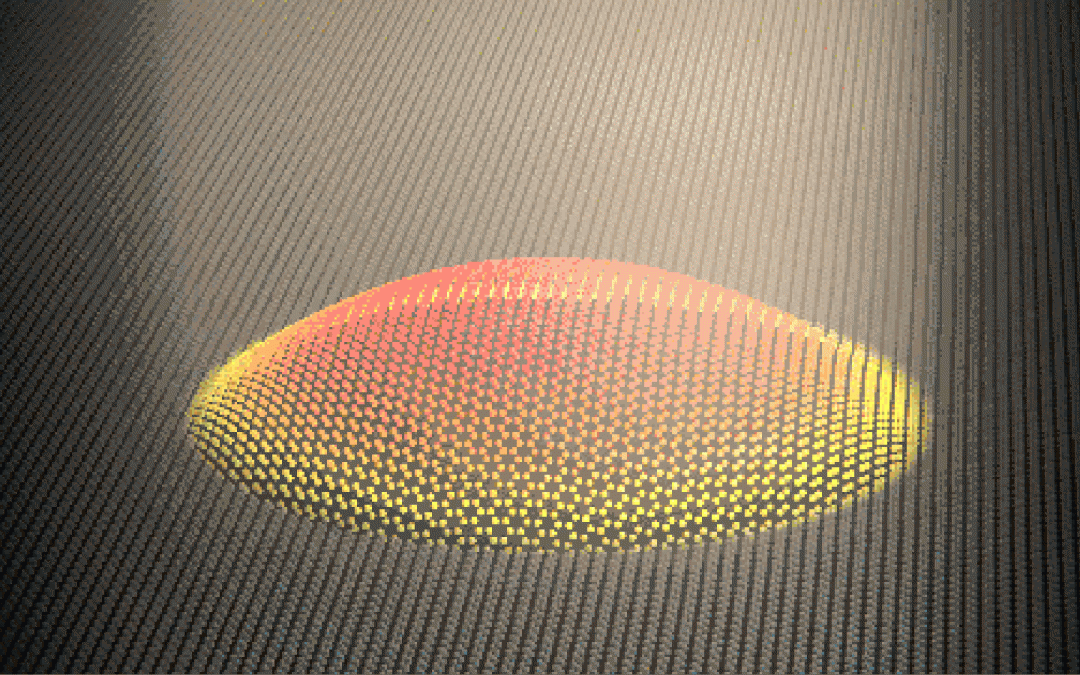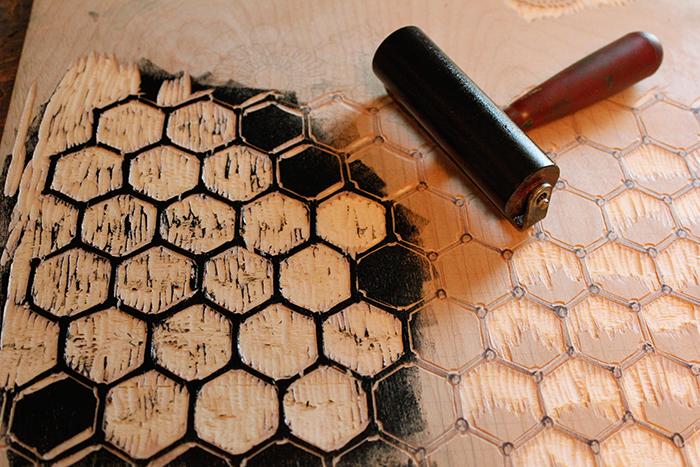
How Graphene-Based Contrast Agents Improve MRI Scans
MRI scans, which generate images of the inside of the body, are important tools when it comes to testing, diagnosing, and detecting internal abnormalities. MRIs sometimes use contrast agents to improve visibility, which, though mostly safe and effective, remain imperfect.
Enter graphene. As it seems with so many areas of science, the inclusion of this atom-thin carbon sheet has the potential to radically improve MRIs—and contrast agents in particular. According to a paper published in the journal Particle and Particle Systems Characterization, discs of graphene called nanoparticles could be used to target specific kinds of tissues during MRI scans.
The material is also incredibly nontoxic, making it even safer than regular contrast agents— some of which have been discovered to have potentially harmful side effects such as nephrogenic systemic fibrosis. According to Sruthi Radhakrishnan, a researcher at Rice, “Virtually all of the widely used contrast agents contain toxic metals, but our material has no metal. It’s just carbon, hydrogen, oxygen and fluorine, and in all of our tests so far it has shown no signs of toxicity.”
Typical contrast agents have their limits, too, which this new agent does not. Where regular contrast agents aren’t suitable for blood pool or tissue-specific imaging, the graphene agent excels.
In addition to being highly efficacious, the new agent is also cost effective, as graphene tends to be. One major reason? The graphene agent can be effective at lower dosages than a traditional agent, reducing the cost per dose. Healthcare costs all around could be reduced, said head researcher Dr. Sitharaman, because “this new MRI contrast agent will substantially improve disease detection by increasing sensitivity and diagnostic confidence, it will enable earlier treatment for many diseases, which is less expensive, and of course more effective for diseases such as cancer.”
Dr. Sitharaman plans to make the graphene-based MRI agent the focus of his startup company, Theragnostic Technologies.

Colorful Graphene Bubbles Produce ‘Mechanical Pixels’
LED technology has enabled the widespread adoption of flat-panel televisions screens and video screens that provide sharp, high-quality images with near-perfect colors. However, that may change in the near future with the introduction of a new type of display technology: ‘mechanical pixels’ produced by graphene bubbles.
Researchers from Delft University of Technology in the Netherlands have been studying the effects of silicon-oxide panels covered with graphene. These sheets of pure carbon are about an atom thick. The silicon panel contains microscopic holes and graphene is stretched over these holes. This allows small, shape-shifting bubbles to form. When the pressure inside the cavities shifts, the bubbles produce different colors by refracting light in a concave or convex state. Graphene bubbles change color as they expand and contract which translates to producing a beautiful array of colors.
Graphene, described as the ‘material of tomorrow’, is the strongest and thinnest material on the planet. It’s a form of carbon and extremely pliable. It was discovered over a decade ago and experiments from Nobel Prize winners in 2010 led to the commercial production of graphene. Since it is such a thin material by nature, researchers at Delft University of Technology had to use a double layer of graphene to produce any type of effect.
So far, the color changes have been observed under a microscope and more testing and experiments are required to see if this process will produce similar results on a larger scale. Using graphene means the new generation of display technology would be extremely lightweight. However, there are still some limitations to this concept. Since there is no way to backlight the display, these panels would only tentatively work with sunlight. In addition, researchers are still trying to create the purest colors from graphene bubbles. Right now, the bubbles produce a full rainbow of colors but not a single, pure primary color with this method.
Will these ‘mechanical pixels’ be creating a wave in the future? There is still much to be explored with this material. Researchers at Delft are working on prototypes that may be ready for the Mobile World Congress tech conference in March 2017.

Monthly Recap: Graphene in the News
In his fascinating profile of the scientific minds behind graphene, John Colapino, writing for The New Yorker, concludes that despite its many advantages, the hype surrounding graphene is disproportionate to its actual uses.
Two years later, breakneck innovation at the finest laboratories across the world has resulted in a number of unconventional, potentially world-changing applications for graphene, as chronicled by tech magazine Endgadget.
Desalination
Of the 72% of the Earth’s surface that is covered with water, only about 3% of it is fit to drink, with the rest taking the form of oceans, brackish lakes, and the like. The problem is compounded when you consider that seawater desalination is too expensive and energy intensive to implement on a wide scale.
But graphene filters are a game-changing innovation. Thanks to their incredibly fine size, measuring 100 nanometers (roughly the width of an atom), water molecules can pass through while salt molecules are trapped, allowing what was once thought impossible: simply filtering seawater to make freshwater.
Faster-charging, longer-lasting batteries
The weaknesses of lithium ion batteries are well-known, from fire risks to decreased battery life. But researcher Han Lin, based at Australia’s Swinburne University, has discovered a way to 3D print graphene batteries which charge more quickly and don’t deteriorate over time.
Rain-powered solar energy
The name might sound like a misnomer, but it’s actually quite simple: Chinese scientists from Yunnan Normal University and Ocean University coated solar cells with graphene, so that when it comes in contact with the natural salts in rainwater, electricity is generated. While efficiency can still be improved, this experiment is an important proof of concept that could bring solar panels to traditionally rainy, cloudy areas.
Commercially-viable, long life lightbulbs
Created by the University of Manchester, where graphene sheets were first unveiled in 2004, researchers coated filaments in graphene for longer-lasting, efficient lifespans. According to the BBC, graphene lightbulbs went on sale late last year, and are said to have a 10% reduction in energy use.
Light, spongy material to clean up oil spills
While cleaning up oil spills has traditionally been a key use of graphene, researchers at China’s Zhejiang University created a lightweight graphene sponge that can reportedly absorb up to 900 times its own weight in oil.
Though paper has been around since 740 C.E., it has always been known as a weak, especially fragile writing material that is susceptible to tearing and water damage, to name a few. Graphene-based paper, however, has ten times the tensile strength of steel, and is recyclable and conductive to boot–ensuring uses across a wide range of industries.
Graphite, the precursor material to graphene, is one of the most common resources in the world today and a versatile material with plenty of dynamic applications.

Something Amazing Happens When You Feed Graphene to Silkworms
If you follow my blog, you know how much faith I have in graphene as a wonder material of the future. Recently, I wrote about some other amazing wonder materials, one of which is spider’s silk — a biological material that is at once stronger than steel, environmentally friendly, low-energy and high-information. So, my readers, if silk has so much potential, here’s a question for you: what would happen when you feed graphene to silkworms?
Silkworm silk, for those that don’t know, does not have the same qualities has spider’s silk. But if you feed silkworms graphene, scientists have discovered, something amazing happens: the silk produced takes on the qualities of graphene.
According to CSMonitor, “the experiment yielded a silk that is twice as tough as ordinary silk and can cope with 50 percent more stress. It also conducts electricity, meaning it could be used to produce wearable electronics.”
The scientists accomplished this by dissolving graphene in water and spraying the solution onto mulberry leaves, which were then fed to the silkworms. The implications here are huge because, due to the speed at which silkworms produce, high-strength silk fibers could be produced on a large scale, bringing graphene into the mainstream.
Such fibers could be used to create super-strong, protective clothing, environmentally-friendly electronics, and a range of other products, too.
Scientists still aren’t sure exactly how the silkworms are processing the graphene and incorporating it into the silk, so there is still a ways to go in understanding and optimizing this process. Another experiment has found that silkworms can be genetically engineered to produce spider silk. We can only imagine what feeding graphene to those creatures might yield!
I’m constantly amazed at the extraordinary results of experiments with graphene and other wonder materials. And remember, this is only the beginning. If graphene aficionados like myself are right, graphene could change our lives in the same way plastics did. I’ll be watching to see what comes with each development, and advise that you do too!

Big Step Made Toward Graphene Bio-Implants
Graphene’s potential for drug delivery and implant tech has long been noted, but up until now it hasn’t exactly played nicely with human tissue. The ultra-strong, conductive, atom-thick material could utterly transform healthcare… but first, we have to get learn to input it without frying biological material in the process. As wonderful as graphene is, I’m sure that would hurt a heck of a lot.
Scientists recently made a huge step in this regard. You see, the issue before was all about heat — you just can’t put a sheet of graphene against skin cells, send power to it, and expect all to function safely. Teams from teams from MIT and Bejing’s Tsinghua University recently ran a simulation, however, and they think they’ve found a solution: water. You might call it a water sandwich, to be a bit more exact.
What’s a water sandwich, besides a suitable lunch for a model? It’s a thin layer of H2O that surrounds the graphene layer. Varying thickness of this water layer could be used to dissipate heat at different rates, a variation that could be controlled based on the graphene itself.
To their surprise, the heat did not build up before flooding and overheating the cell membrane. Instead, the water crystallized against the chicken-wire patterned graphene sheet and dissipated the heat evenly. The water behaved like a solid material, easing the conductivity from graphene to membrane.
The scientists also identified the critical power the graphene should be applied with to avoid any membrane frying. Their findings were published in the journal Nature Communications on September 23.
The ability to control graphene’s heat could be especially useful if and when, in the future, it’s used to target and kill cancer cells. Frying wouldn’t be so bad at all in that case.
According to so-author Zhao Qin, a research scientist in MIT’s Department of Civil and Environmental Engineering (CEE), “I think graphene provides a very promising candidate for implantable devices….Our calculations can provide knowledge for designing these devices in the future, for specific applications, like sensors, monitors, and other biomedical applications.”

7 Wonder Materials of the World and Future
“World wonders” are ancient, massive sights to behold, both natural and manmade. Wonder materials, in contrast, are much newer discoveries, wonderful not for their impressive size, but their qualities and versatility.
I write a lot about graphene on my blog, and for good reason: it’s a material with amazing properties and incredible potential applications. That’s why they call it a wonder material. But I would be remiss not to mention some of the other wonder materials currently in development. These materials are amazing in different ways, and each have impressive applications of their own.
Here are seven wonder materials of the world you should know about. They aren’t as majestic as grand pyramids or canyons, but they are all definitely awesome in their own right:
- Graphene: As you may already know, graphene is a super-light, highly conductive layer of carbon that is both thinner than paper and stronger than steel. Graphene is ideal for flexible devices, body implants, and battery power, not to mention military and healthcare technology.
- Spider Silk: Scientists have long been fascinated with the ridiculous strength of spider webs, but it’s only been recently that they’ve been able to harness it through genetic engineering. Spider silk is a stronger-than-steel, high-information, low-energy, and environmentally friendly material. Though difficult to mass-produce, it could aid in the production of bulletproof vests and artificial limbs.
- Metamaterials: These wonder materials are capable of masking both light and sound, not unlike an invisibility/silence cloak. One metamaterial, fishnet-like in construct, is printed into layered silver and dielectric composite films that effectively mask the visible light spectrum, totally concealing objects from certain angles.
- Shrilk: Take discarded shrimp scales and silk protein, and what do you get? For scientists, it’s shrilk, a wonder material as strong as aluminium but just half the weight. The clear, flexible material is fully biodegradable and would make an excellent substitute for plastic.
- Stanene: Created on a computer and designed from theory, stanene is an insulator on the inside and a conductor on the outside. Atom-thin sheets of it could conduct energy with 100 percent efficiency, and ultimately replace silicon as an abundant and affordable material for computer chips.
- Aerogel: Fully translucent and nearly light as air, the material aerogel is derived from gel with the water replaced with the liquid component replaced by glass. The material has evolved over the years, and thanks to NASA research, may be used to create light, insulated space suits.
7. Black phosphorous: 2D crystal black phosphorus has a wide range of electronic capabilities, in some cases even more so than graphene. Because of its wide bandgap and ability to disperse light, it could be especially useful for nanoelectronics. It’s produced by putting lumps of crystals into liquid and bombarding it with acoustics until thin sheets fall away.

First Ever Graphene Car Promises Faster, Lighter Driving Experience
As those that read my blog know already, graphene is called a “wonder material” for a reason. Namely, it’s incredibly thin — 2D, in fact — as well as strong, light, flexible and superconductive. When we talk about graphene we usually talk about its potential in regards to healthcare, military sciences or energy efficiency. The truth is, its application could expand far beyond that. One that’s rarely mentioned? The automotive industry.
On July 22 in Manchester, the birthplace of graphene, the world’s first graphene car was unveiled. The vehicle, which has the material in its bodywork, was manufactured by Briggs Automotive Company in Speke, Liverpool. It’s a race car called the BAC Mono, and spearheaded an exhibit highlighting the technological applications of graphene.
According to James Baker, graphene business director at The University of Manchester, “The graphene car is an excellent example of how graphene can be incorporated into existing products to improve performance.” Graphene, which is just an atom thick and 200 times stronger than steel, would allow for a faster and more protective road vehicle ideal for enhanced performance and efficiency.
The BAC Mono used graphene in the car’s rear wheel arches, which the company developed with the help of firm Haydale Composite Solutions. The graphene parts aren’t offered yet on the production version of the Mono, but carbon fiber wheels are offered, which is not a bad alternative for now.
Graphene has been eyed up by the military for super-fast jet planes, so it’s no surprise the material would have similar benefits for ground vehicles. In 2015, the Spanish supercar startup Spania GTA showcased a prototype for a car called “Spano” with components including graphene, Kevlar, and conventional carbon fiber.
What’s next for graphene in the automotive industry? It’s difficult to say. In theory, it could be used as a coating for impermeable vehicles, or even to construct a whole car. For the everyday person that doesn’t need a fast or impermeable car, it will most likely take the form of lighter, smaller, cheaper car batteries. Thanks in advance, graphene!

Graphene’s Amazing Self-Folding Properties
It’s like origami. With a little imagination, the possibilities are endless.
With just one look at this video from scientists at Donghua University in China, you will be in awe of the amazing, self-folding properties of graphene. It’s eerie, life-like behaviors — such as walking and grasping – lead researchers from all over the world to think that this could be a breakthrough for future technology.
Graphene is a thin layer of pure carbon – the thinnest known to man at just one atom thick – but it’s incredibly strong and stretchy. It moves by treating sections of graphene paper so it naturally absorbs water vapor from the atmosphere. When the paper is heated, water vapor is released and the paper moves. Even poking it with a diamond tool prompts tiny ribbons of the material to peel away.
According to Jiuke Mu, a doctoral student at Donghua University, he and his team “believe that this self-folding material holds potential for a wide range of applications such as robotics and artificial muscles.” The video shows graphene in the shape of a hand that grasped and lifted another material, similar to a muscle.
Not only that, but walking devices, self-assembling boxes and smart clothing are also possibilities as well. The material could change shape and style in response to body temperature or environmental changes.
Another team of researchers at Trinity College in Dublin, Ireland came across the graphene discovery as well. Graham Cross says the sheets could be folded to make sensors and transistors. Such devices could allow for nanoscale electronics and faster computers. This could also help the food industry, as graphene-based sensor on packaging could break if an item’s temperature rose above a certain level.
Unfortunately, it could be awhile until any practical applications can be made with this material. Mu believes there is still room for improvement to be more energy efficient. Additionally, Cross says they need to explore the properties of nanoscale graphene, as they believe the properties change when the graphene is smaller in size.
We’ll just have to wait to see what’s to come. Considering the amazing things that can be done with actual origami, graphene’s folding properties could reach miraculous new depths, out of the art world and into science.
A Brief Look at Graphene’s Amazing History

What the End of Moore’s Law Means for Graphene
Back in 1965, Intel cofounder Gordon Moore observed that processing power for computers would double every two years for the foreseeable future. This idea turned out to be true, and became known as Moore’s Law, as engineers continually found ways to make the components on computer chips not only smaller, but also faster and cheaper.
When Moore first made this observation, a memory chip could store up to 1,000 bits of information. Today? A memory chip can now store up to 20 billion transistors. Moore’s Law has driven Silicon Valley to incredible tech breakthroughs ever since Intel and Apple ushered in the age of personal computers back in the 70s. Since then, we’ve moved into an age of handheld computers in the form of smartphones—and soon we may even have bendable phones, thanks to graphene.
But is the end of Moore’s Law in sight? And if so, what happens to computer innovation if chip processing can no longer get smaller, faster and cheaper?
Chip technology has already become so advanced that engineers are manipulating materials on the molecular and atomic level. It’s hard to get smaller than an atom, which is why engineers are starting to look beyond silicon for the next game-changer in the world of tech.
The most likely candidate to knock silicon off the chip throne? Graphene, of course. In 2014, IBM built the first successful graphene analog chip that ran 10,000 times faster than a silicone version. Because graphene is just one atom thick and extremely flexible and conductive, it’s a viable alternative to the silicon and copper setup currently used in chip technology. Best of all, it could lead to lower heat production, energy consumption, and lower cost.
Graphene still faces some technological hurdles in becoming a viable semiconductor in computer chips– namely that it has no bandgap in its molecular structure, making it difficult to retain data in addition to sending it at super fast speeds.
For now, IBM believes carbon nanotubes may be a more viable alternative to manufacture direct semiconductors. Graphene, however, has huge potential for photonic computing, or computers powered not by electricity, but by light. Photons can move info much more quickly than electrons, so the future of computers is most likely in optic tech.
Studies have found that using a combination of graphene, silicon and electrodes can produce computer chips capable of swiftly converting light into electrical signals. Such technology will have a huge array of applications in computers and smartphones. Once scientists solve the optic computing puzzle, we can expect to see graphene as a main player in the computer chips of tomorrow.
Just as Moore’s Law provided engineers with more than a half century of computer innovation, graphene promises to usher in the next generation of technological breakthroughs. Just another reason graphene is such a smart material to invest in.


